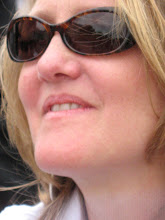 Leonardo da Vinci was the true "Renaissance Man": able to do it all. Not only was he the innovative artist and painter we continue to celebrate today, 500 years after he lived, he was also a musician, mathematician, philosopher, scientist, draftsman, architect, engineer, and inventor centuries ahead of his time.
Leonardo da Vinci was the true "Renaissance Man": able to do it all. Not only was he the innovative artist and painter we continue to celebrate today, 500 years after he lived, he was also a musician, mathematician, philosopher, scientist, draftsman, architect, engineer, and inventor centuries ahead of his time.Many of Leonardo’s technological designs were so conceptually advanced that they could not be realized during his 67 years on the planet. Ideas for such machines as the
 helicopter, hang glider, and armored tank were only a few of Leonardo’s inventions considered impractical, even crazy, by his contemporaries. Today, at the Clos Lucé - the home given to Leonardo by French King, Francois I, and where he spent the last three years of his life - you can find three-dimensional replicas of these and many other inventions conceived by Leonardo.
helicopter, hang glider, and armored tank were only a few of Leonardo’s inventions considered impractical, even crazy, by his contemporaries. Today, at the Clos Lucé - the home given to Leonardo by French King, Francois I, and where he spent the last three years of his life - you can find three-dimensional replicas of these and many other inventions conceived by Leonardo. Thanks to the IBM Corporation, 40 da Vinci machines are on display at the French home of the former Tuscan master. Created using Leonardo’s own plans and sketches, they reveal his intellect as a military engineer, town planner, and mechanical genius capable of conceptualizing both the nature of hydraulics as well as the possibility of human flight.
Thanks to the IBM Corporation, 40 da Vinci machines are on display at the French home of the former Tuscan master. Created using Leonardo’s own plans and sketches, they reveal his intellect as a military engineer, town planner, and mechanical genius capable of conceptualizing both the nature of hydraulics as well as the possibility of human flight.Even in his lifetime, Leonardo was valued as an engineer. He devised numerous devices for protecting and besieging enemy cities, such as moveable barricades, catapults, and repeat-action weaponry. In 1502 he designed a 720 ft (240 m) bridge for Sultan Beyazid II of the Ottoman Empire intended to span the mouth of the Bosporus River. Beyazid did not pursue the project, believing the construction to be impossible. However, 504 years later, in 2006, the Turkish government went ahead with Leonardo’s plans and built the bridge over the Golden Horn.
Leonardo died at the Clos Luce on May 2, 1519, in the arms of his friend and patron. The two
 had met only four years before when Francois I’s army captured Milan. The French King appreciated Leonardo’s genius right away and brought him to the Loire Valley to live out the rest of his life tinkering with his inventions. Twenty years after the Renaissance Man’s death, the King is reported to have said, “There had never been another man in the world who knew as much as Leonardo”.
had met only four years before when Francois I’s army captured Milan. The French King appreciated Leonardo’s genius right away and brought him to the Loire Valley to live out the rest of his life tinkering with his inventions. Twenty years after the Renaissance Man’s death, the King is reported to have said, “There had never been another man in the world who knew as much as Leonardo”.Despite being the birthplace of the Renaissance, today’s Italy is not yet fully connected to the wireless world. This is the first time in eight days that I’ve been able to find a hotspot and send you a new post. Thanks for your patience with me, dear readers. I’ll be back at home and posting regularly again soon!
Images:
Engraving of Leonardo da Vinci, courtesy of Wikimedia Commons.

No comments:
Post a Comment